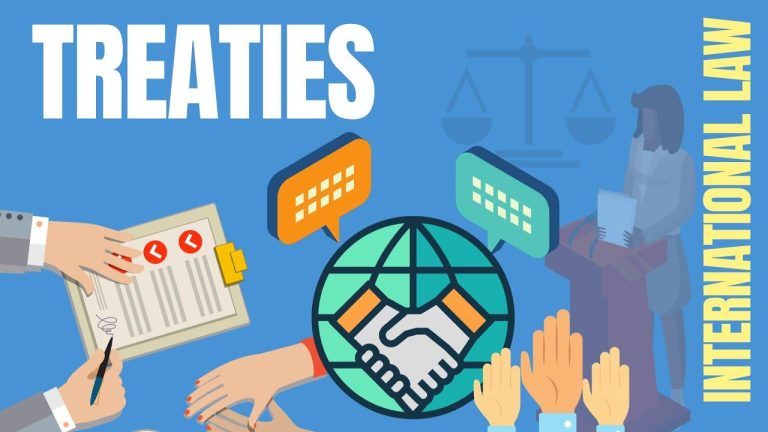Governments are intensifying negotiations on a slate of high-impact international accords, with talks spanning climate finance, biodiversity, oceans governance, digital trade, health security, nuclear risk reduction, and standards for emerging technologies. After years of uneven progress and geopolitical strain, delegations are pushing to convert draft texts into enforceable commitments, a shift that could reshape the rules governing money, data, security, and the environment.
This article outlines the major files in play-where negotiations stand, the key actors, the principal sticking points, and how enforcement and financing would work. It also examines the domestic politics that could decide ratification, the timelines negotiators face, and the likelihood of partial arrangements versus comprehensive treaties. Here is what’s on the table, and what to watch in the weeks and months ahead.
Table of Contents
- Climate negotiations hinge on finance transparency and a binding loss and damage fund with phased targets
- Digital trade pact should adopt interoperable privacy rules labor safeguards and dispute timelines to unlock growth
- Security agreements need joint verification teams shared intelligence protocols and clear sunset clauses to build trust
- The Conclusion
Climate negotiations hinge on finance transparency and a binding loss and damage fund with phased targets
Negotiators signaled that any landing zone will depend on verifiable money flows and an enforceable facility for climate harm, with draft language converging on granular disclosure, a broadened contributor base, and staged obligations calibrated to risk and capacity; observers note unresolved splits over who pays, how fast targets ramp, and whether automatic escalators trigger when gaps emerge, while vulnerable states press for rapid disbursement and debt‑safe modalities and donors seek assurance that funds are tracked, audited, and shielded from double counting.
- Transparency package: common definitions of climate finance, public ledgers, independent verification, and real‑time tagging to prevent double counting and diversion.
- Contributor base: expanded beyond traditional donors, using ability‑to‑pay and responsibility metrics to set fair shares.
- Loss and damage facility: binding commitments with phased targets, simplified access for frontline communities, and triggers for rapid payouts after extreme events.
- Revenue options: levies on international transport, assessments on fossil windfalls, and market instruments to ensure predictable, non‑debt‑creating flows.
- Accountability: five‑year replenishment cycles aligned with the Global Stocktake, corrective escalators for shortfalls, and public compliance scorecards.
Digital trade pact should adopt interoperable privacy rules labor safeguards and dispute timelines to unlock growth
Draft language circulating among negotiators indicates momentum for a ruleset that marries cross-border data protections with worker rights and predictable enforcement, with trade officials arguing that synchronized standards would ease compliance for exporters while giving regulators confidence to keep data flowing and investors the certainty to scale.
- Interoperable privacy: Mutual recognition of adequacy decisions, common definitions for personal/sensitive data, and portability standards that align with domestic law while enabling transfers.
- Labor safeguards: Baseline protections for platform and logistics workers, algorithmic transparency on pay and scheduling, and cross-border grievance channels backed by enforceable remedies.
- Dispute timelines: Time-bound stages-consultations within 30 days, panel establishment by 60, determinations within 180-with expedited tracks for SMEs and urgent data-flow interruptions.
- Growth impact: Lower compliance friction, reduced regulatory fragmentation, and clearer market-entry pathways for cloud, fintech, and e-commerce firms across jurisdictions.
Security agreements need joint verification teams shared intelligence protocols and clear sunset clauses to build trust
As negotiators edge toward framework accords, trust is emerging as the decisive variable, and delegations are converging on concrete safeguards to translate intent into enforceable assurance: multinational inspection units with shared mandates, interoperable data-sharing channels bounded by legal oversight, and time-limited provisions that oblige periodic political renewal rather than open-ended entanglements; officials argue the package would speed compliance checks, deter covert activity, and create credible off-ramps if conditions deteriorate, while giving legislatures measurable milestones for ratification and review.
- Joint verification teams: Mixed-nationality inspectors, rotational leadership, mirrored access rights, and synchronized reporting to all parties.
- Shared intelligence protocols: Standardized data formats, secure liaison cells, and guardrails to prevent domestic surveillance spillover.
- Clear sunset clauses: Automatic expiry aligned to benchmarks, transparent renewal votes, and mandated public disclosure of outcomes.
- Incident-response triggers: Pre-agreed fact-finding windows, rapid de-escalation hotlines, and interim safeguards during disputes.
- Accountability and audit: Independent review boards, tamper-evident data logs, and proportionate penalties tied to verified breaches.
The Conclusion
As negotiators return to the table, the central test remains balancing domestic red lines with the push for coordinated rules. With political calendars tightening and technical drafting accelerating, verification, enforcement, and financing will determine whether provisional understandings harden into binding text.
In the coming rounds, watch for movement on consolidated drafts, interim confidence-building measures, and signals from key capitals. Whether the process yields comprehensive deals or a framework for further work, the outcome will shape standards and partnerships across trade, security, climate, and technology. Talks continue.


